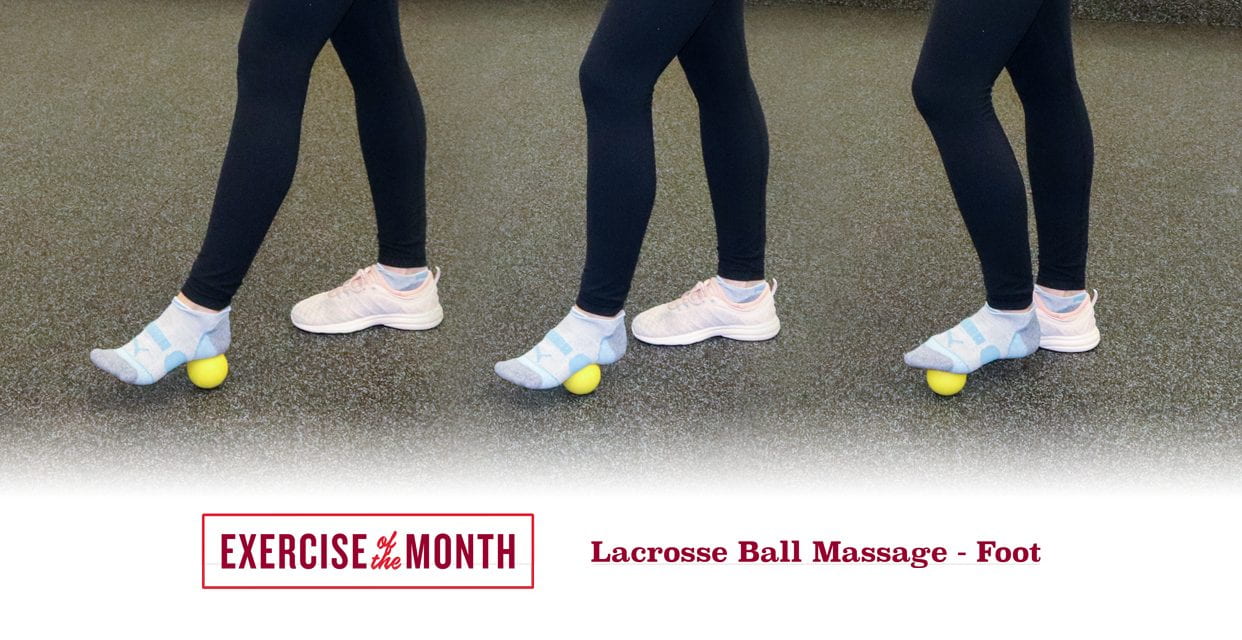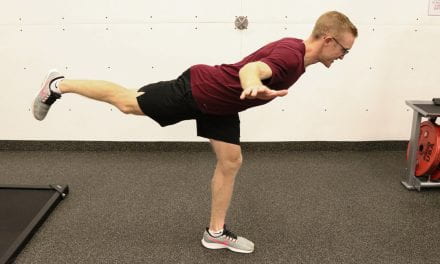Using a lacrosse ball under your foot can immediately and effectively improve your hamstring and calf muscle flexibility, relieving pressure on your lower back and minimizing discomfort. By rolling through the plantar fascia under the bottom of your foot, you help decrease tightness and inflammation, making it much less likely to become irritated.
Don’t forget, all those muscles from the calf insert down into the foot – so when the fascia is tight, we tend to move in ways that aren’t necessarily advantageous for our hips and knees!
Equipment Needs
- Lacrosse ball, tennis ball or golf ball
Muscle Groups Targeted
- Foot (flexor digitorum brevis, abductor hallucis, abductor digiti minimi, plantar aponeurosis)
- Calf (gastrocnemius, soleus, Achilles tendon)
- Hamstrings (biceps femoris, semitendinosus, semimembranosus)
How to
- Sit comfortably with your feet on the floor.
- Place the lacrosse ball under the arch of your foot.
- Slowly roll the ball back and forth from the base of the heel to the ball of your foot. You’ll want to ensure you’re hitting the lateral (outside) of the foot and the medial arch (inside of the foot).
- Continue for approximately 45-60 seconds. If you find an extra tender/sore/tight area, you can hold the ball and gently apply pressure, followed by rolling.
- Repeat on the other side.
Recommended sets and repetitions
- 45-60 seconds, repeat one to two times per side as needed
Check out the previous tip in this series – Back and Shoulders
Visit our website for training consultations, virtual coaching, and individual and group personal training. If you’re ready to work with one of our Exercise Specialists, fill out the consultation form so we can connect you with the best trainer to help you meet your goals. Sign-up to receive our monthly newsletter for news, announcements, program information, swim tips, and exercise demos.
By Jenni Varughese
Jenni is an exercise specialist and instructor at MacEwan University Sport and Wellness. Certified with the Canadian Society for Exercise Physiology, Jenni has worked with a great range of clientele – predominantly those with chronic disease, pre/post-op orthopedic surgery, and mental health challenges.



